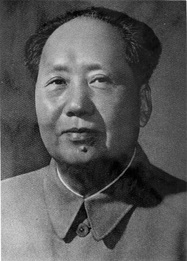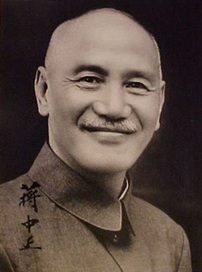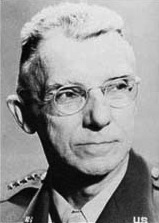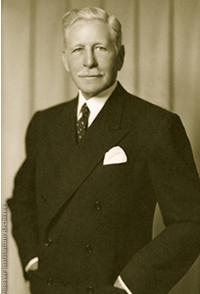There were many negative connotations to the Sino-Japanese war for the GMD.
Chiang Kai-Shek made poor decisions in the run-up to the war. His decision to pursue the Communists and consider the Japanese an after-thought can be argued to be reason for the GMD’s fall to power. There is historical debate over this decision of his, as one could argue he was aware of the legitimate threat of the CCP, but another side suggests not paying attention to the growing threat of the Japanese allowed for devastating effects such as the Rape of Nanjing in 1938, which caused the GMD to greatly lose popularity; perhaps strengthening the CCP’s chances of success. In 1931, Chiang made no attempt at resistance to the Japanese invasion of Manchuria. He was more interested in launching extermination campaigns against the Communists, famously citing the Japanese as a “disease of the skin” and the Communists as a “disease of the heart”. On 7 July 1937, a small incident on the outskirts of Beijing led to full-scale war between the two quarreling countries. There was initially, a growing sort of nationalism and support for the GMD in the run-up to the war, but this soon changed. The GMD grew less and less popular with each poor tactical decision. There was high taxation, requisitioning of land and recruitment. All of this compounded to make the GMD lose support and popularity in the face of the public. There was also furthermore lose of support in 1938, when Chiang Kai-Shek had the dikes of the Yellow River removed in an attempt to keep the Japanese away, with the threat of floods. However, the GMD denied this knowledge to civilians, in time for them to prepare, partly due to wanting to keep this decision secret to ensure the Japanese had no knowledge of it. This resulted in the loss of thousands of Chinese lives, and further created resentment towards the GMD. Another negative effect of the war on the GMD was how the GMD was soon compelled to create a second united front with the CCP in 1937. This was done in order to come together to fight the Japanese, but the act of reconciling not only was humiliating but displayed weakness of the GMD. Whilst actual communication between the two parties was minimal, the act of making the truce in itself was a sign of weakness in the face of the Japanese. It coined the idea that the greater threat to the GMD was not the CCP, but indeed the Japanese. If this was so, then it made Chiang’s efforts at exterminating the CCP seem all the more futile, causing further exposure of not only weakness, but lack of leadership and strategy
Despite the negative impacts looming over the GMD, there were also positive impacts of the Sino-Japanese war. One of the benefits being the initial support that the GMD received in the face of the Japanese. Whilst this nationalism led to the Japanese feeling furthermore threatened by China, it was initially a positive thing for the GMD. Then, there was also the fact that the Sino-Japanese war resurfaced the USSR’s involvement in their affairs. Stalin supplied the Chinese with many different weapons, including 82 T-Tanks, 2,118 vehicles and 1,140 artillery guns. This was a positive benefit for the GMD, as it helped to bring some sort of security for their party and their rule. There also lies the most fundamental fact that even after the war, Chiang Kai-Shek was still elected twice as the president of China until 1949. There is also the fact that despite events such as the Nanjing massacre of 1937, that the Chinese were still able to defeat the Japanese in 1945. Whilst this can be attributed to Japan’s own defeat in WW2, this success under GMD rule still initially paints them in a positive light with support, despite their reactionary steps during the war itself. This can particularly be seen from the fact that Chiang remained an elected leader until 1949. So therefore, it could be argued that in the grand scheme of things, within the concept of popularity, the GMD found more benefit than negatives
Along the road of the Chinese Communist Party(CCP) rise to power, the CCP also had some negative aspects to their rise. During the take over, they began indoctrinating the local communities under their rule, this allowed them to gain more support to try and defeat the Japanese and the GuoMingDang(GMD), but at the cost of the freedom of the people, going against the ideology of the Communists. Landlords under the Communist rule, were harassed or even killed and had their land taken off them by the Communist’s. The CCP was more focused on expansion then fighting the Japanese, while it fought more than the GMD did, it only spent in Mao’s words “10% focussed on fighting the Japanese and 90% focussed on expansion and recruiting into the CCP.” This shows that the public goals the CCP had made of fighting the Japanese in Mao’s open letter to Chiang-Kai Shek, were of little priority to Mao. The CCP also had a lack of foreign support where as the GMD had large amounts, the GMD recieved help from not only the USSR but also the USA. When Japan surrendered they had surrendered to the GMD rather than the CCP, this shows how little international recognition the CCP had. The Americans also sent a mission to investigate and possibly help the CCP, but was later cancelled. These factors all show the negative aspect of the CCP.
In 1937 the Chinese Communist Party(CCP) controlled a small rural area, with a population of 1.5 million peasants, the red army numbered 80,000, and party membership was 40,000, with a total population of china close to 500 million and by the end of the Sino-Japanese war, the CCP had grown massively controlling large amounts of land and by 1945 90 million people lived under communist rule, the red army numbered over 900,000 soldiers and supported by 2 million militia troops and membership was 1.2 million.The GuoMing Dang(GMD) agreed to a peace with the CCP and together formed the Second United Front. The GMD stopped attacking CCP and officially the CCP troops were under Chiang's control, though realistically was under CCP control still, showing that the CCP was. The CCP change some policies to support Nationalists, such as changing the Land rent rather than confiscate from landowners, this shows that they were supporting the GMD and willing to cooperate to fight against the Japanese, which in turn made Chiang Kai-Shek look bad, as Chiang was still causing skirmishes with the CCP. Guerrilla warfare was committed by communists in the north of China, this shows that they were attempting to fight back against the Japanese, which the GMD was not doing so, which improved the reputation and support of the CCP. The CCP also attempted a “hundred regiments” offensive which failed, though showing their commitment to fighting the war against the Japanese, not only gaining support from allies, peasants and the working class but also support from other classes who wanted to see the foreigners out of China.Under the CCP rule, the people developed self sufficiency, this helped improve these parts economically. When peasants needed help, red army and intellectuals would often step in to help reach this self sufficiency, and further prove the ideology of comradeship and equality that the CCP had.Literacy campaigns were used, to help educate the public, giving equal chance to all the civilians under CCP rule. Showing a general increase in prosperity for all those living under the CCP rule compared to that of the GMD, and showing the Strength of the CCP fighting back against the Japanese invasion.
Mao Zedong
After the New Forth Army Incident in 1941, Mao announced the end of the Second United Front and outlined the CCP’s plan to Seize power from Chian Kai-Shek. Used his own ideologies to form the “Mao Zedong Thought” that became the central tenants of the CCP. Rather than fully focusing on the war at this time, Mao instructed to increase the Communist sphere of influence. Mao’s influence allowed the Russian Invasion of Manchuria in August of 1945, one of the leading causes of the civil war.
Chiang Kaishek
Chiang had been receiving aid from Western powers, however the sea routes that were used closed in 1940 and aid was limited until 1945 when the Ledo Road was opened. During the time of War, Chiang’s close family was often accused of embezzling money and ignoring corruption, he was never accused personally of contributing to this however. His wife was an advocate during this time for the boycotting of Japanese goods, speaking English; she was able to get her message across to America. Chiang’s military strategy of outwaiting the Japanese caused the loss of support from many foreign powers and is considered to be one of the reasons for America to partake in the Island Hopping Strategy instead of focusing on defeating the Japanese from inside China.
Joseph Stilwell
American Officer sent to China to assist in military strategies. Not after too long, relations between Stilwell and Chiang Kai-Shek broke down. This was seen as one of the causes to The GMD’s inability to defeat the Japanese. Interpretations for the reason of this come to either blaming the corruption of the government and Stilwell’s intolerance of it, or that Stilwell was too radical and Chiang was not willing to go along with the very aggressive plans that Stilwell proposed.
Patrick Hurley
Sent to China by Roosevelt to make an assessment of the prospects of assisting the Powers in China. He was sympathetic towards the GMD and didn’t take the Communists seriously. With his assessment, the GMD gained most of the support from America, even though many foreign State department officials stated that China had the better chance at defeating the GMD.
 An example of western (American) propaganda against Japan during World War Two
The Second World War began two years after the start of the Sino-Japanese War in 1939. It wasn't until after the Japanese attack on Pearl Harbor (December 7, 1941) that the West really got involved in the conflict. The USA immediately sided with the Chinese, sending a representative (former attache General Joseph W. Stilwell) to encourage a Chinese offensive. The alliance with the allied forces allowed China help with military strategy in their fight to maintain as much sovereignty as possible.
This alliance between the Chinese and Allied forces also led to the eventual - catastrophic and forever altering - dropping of the Atom bomb on Hiroshima and Nagasaki (Japan).
The propaganda is an example of why the USA sided with the Chinese in the Sino-Japanese war and the antagonistic feelings that were the consequence of the bombing of Pearl Harbor (US Naval Military base in Hawaii).
The atom bomb was no great decision... It was merely another powerful weapon in the arsenal of righteousness.
-President Harry Truman
No compromise is possible and the victory of the democracies can only be complete with the utter defeat of the war machines of Germany and Japan.
- G.C. Marshall, Chief of Staff
Above is an hour long explanation of the outbreak of the Sino-Japanese war in 1937. Be wary that there are graphic images of violence and may not be suitable for those of a younger age, or with weak stomachs. The Second Sino-Japanese War broke out in 1937 between China and Japan after an incident at the Marco Polo Bridge near Beiping in China. The war constituted many milestones for the Chinese one of which being the formation of the Second United Front between the Chinese Communist Party (CCP) and the Guomindang (GMD). The involvement of Japan and China in the Second World War aligned with the Axis Powers and the Allies respectively. It marked the final downfall of Nationalist (GMD) China and made way for the rise of Communist China (1949).
|





 RSS Feed
RSS Feed